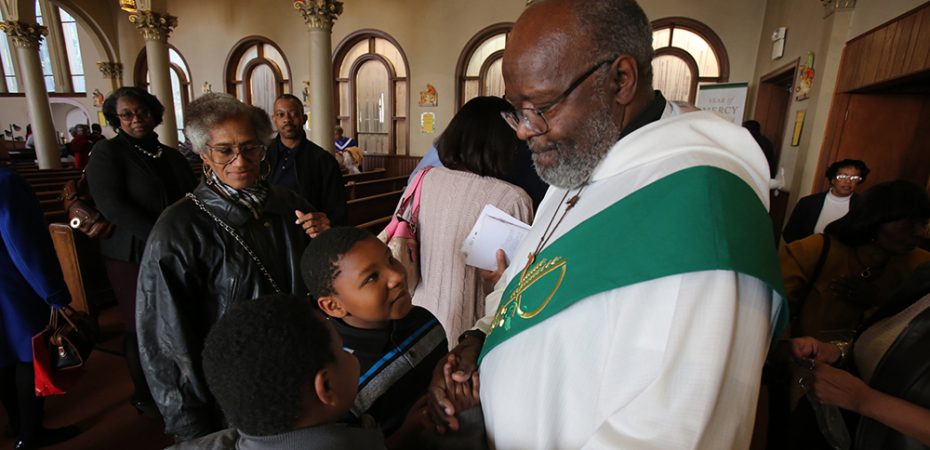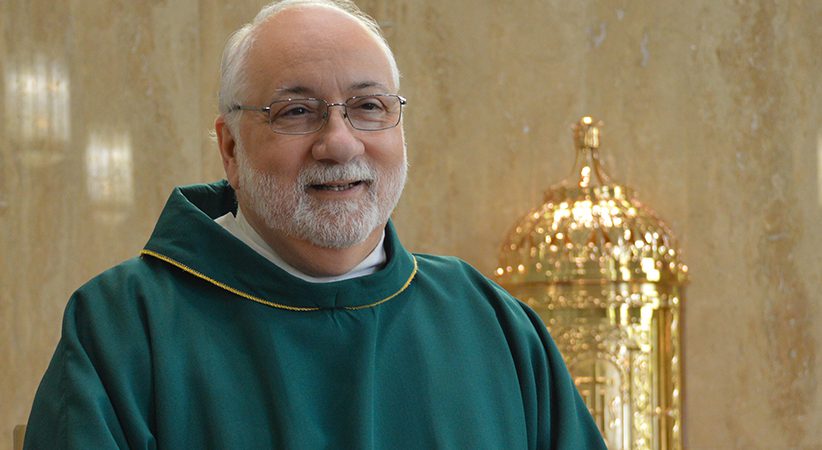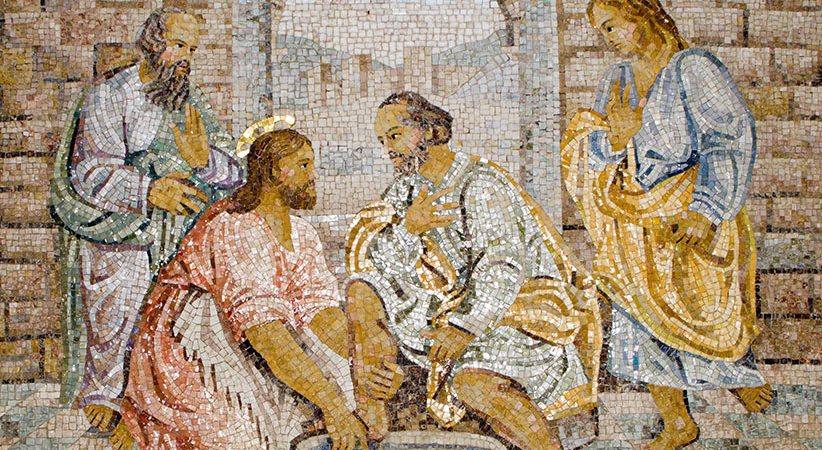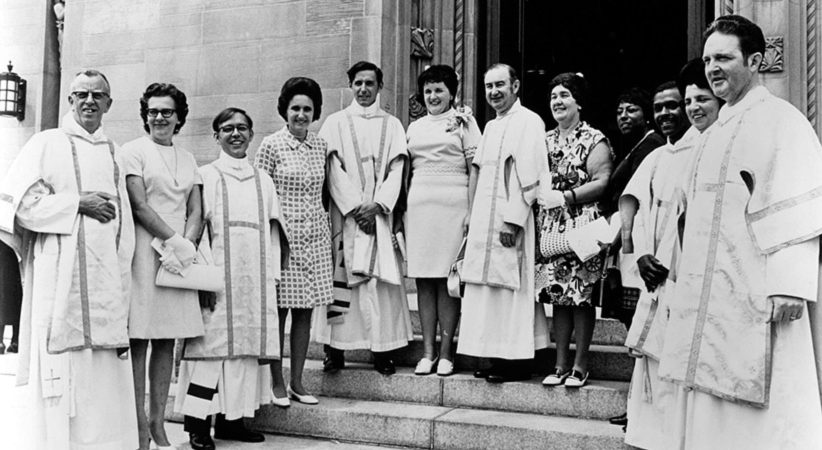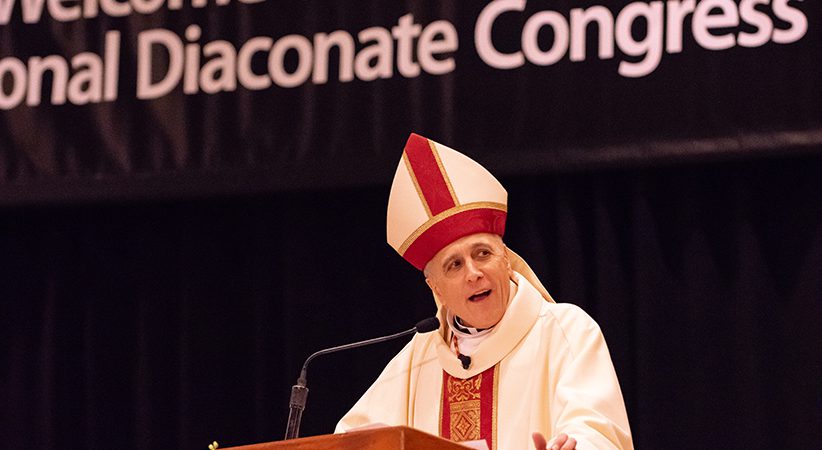The Necessity of Good Feedback
Through constant assessment, evaluation and guidance, we can develop into effective preachers
Deacon Steve Kramer Comments Off on The Necessity of Good Feedback
 The recessional hymn is being played and you make your way to the back of the church or into the gathering area and greet people who have just worshipped with you. As they head for their cars, often you may hear something like: “Thanks for your homily,” or “I appreciated the story in the homily.” You may even get a “great message, it made me think.” When was the last time you received or, better yet, asked for feedback on one of your homilies?
The recessional hymn is being played and you make your way to the back of the church or into the gathering area and greet people who have just worshipped with you. As they head for their cars, often you may hear something like: “Thanks for your homily,” or “I appreciated the story in the homily.” You may even get a “great message, it made me think.” When was the last time you received or, better yet, asked for feedback on one of your homilies?
As a homiletics professor, I encourage seminarians, diaconate candidates and especially ordained clergy who return for continuing education to continually work on the ars praedicandi (“the art of preaching”). It is only through constant assessment, evaluation and guidance that we can develop into effective preachers.
Sometimes, we think of feedback simply as an evaluation of performance: How can I improve my presentation? Homily construction? What is my ability as a preacher? My knowledge of the Scriptures? My understanding of and compassion for the community? Is there a way to gauge the content of a homily or the impact it has made?
Let’s consider two different types of feedback: pre-delivery vs. post-delivery.
Pre-delivery
When I first began preaching 30 years ago, it became apparent that I needed brutal honesty about the content of my proposed homily. My friend Elaine was just such a person to provide that. After all my study, exegesis, lectio divina, writing and revising, she would listen and share her thoughts.
One evening she said to me, “Do you really want to say that?”
I asked, “Is that not good?”
Elaine replied, “Only if you want every woman in the parish to be angry with you!”
I wasn’t thinking of a woman’s point of view on a particular topic. She set me straight and gave me the gift of learning to appreciate feedback from men, women, children and young adults before delivering my message. My wife has listened to numerous potential homilies over the years, as have our children. Our youngest was 3 and our oldest 12 when I was ordained, so I had a built-in audience of four children of various ages to “test out” my ideas. Their reactions and the feedback from my wife and my friend Elaine were invaluable.
Another type of pre-delivery feedback is a concept endorsed in Appendix A of “Fulfilled in Your Hearing” (USCCB, $7.95). Paragraphs 106-108 discuss the effectiveness of a homily preparation group. It calls for having a small gathering of people that the preacher trusts, on a rotating basis, to come together early in the week to discuss issues in the community, where God was active in their lives, and how the upcoming Scriptures spoke to them. These discussions could enable the preacher to be aware of what the people needed to hear. It assists the preacher in understanding what messages could be extremely helpful for or extremely detrimental to the community. It’s important to consider the perspectives of various ethnic or minority groups, young adults and others that we may not be aware of. While this might seem to fall more in line with preparation, I have always accepted this input as advanced feedback on the creative process.
Post-delivery
Immediate feedback is best. Whether you are an experienced or newly ordained preacher, feedback directly after Mass is most helpful. Your message is fresh in the minds of those who have just heard you and it is essential to ask parishioners for their feedback then. A simple form (given to six to eight parishioners at every Mass preached), which requests short written answers rather than a numerical scale, seems to work best. Questions like: “Was the message clear and organized?”; “Did the preaching flow from the Scriptures?”; “What was the main point of the homily?”; “Was the preacher’s introduction and conclusion engaging?” are easy enough to answer in a sentence or two. These responses will help you hear what your people are receiving or not receiving from your preaching.
Taping your homily and viewing it at a later time is a vital tool for self-evaluation. In “Preaching Better” (Paulist Press, $14.95), Bishop Kenneth Untener stated, “Good feedback is priceless because it’s hard to get.” People might have enjoyed the homily, but did it achieve the end for which it was sent? How would we ever know? I spent four years ministering in a rural diocese. Each week Mass was taped for television, and during the week it was not unusual for me to see myself or my pastor preaching. Days later, after reflecting on how I felt the homily was received, I could now see the faces of people nodding, smiling or looking bewildered.
The ultimate goal of preaching the Gospel is to turn people to God! With good honest feedback, homilists are able to hone their preaching skills to change people’s hearts.
DEACON STEVE KRAMER, D.Min., is the director of homiletics and associate professor of pastoral studies at Sacred Heart Seminary and School of Theology in Hales Corners, Wisconsin.

